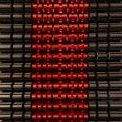-
Posts
164 -
Joined
-
Last visited
-
Days Won
5
Content Type
Profiles
Forums
Events
Blogs
Everything posted by redux
-
P5E64 sold lots of mobos added: P3B-F, X58A-OC, Z170M OCF, NF7, A7N8X-E, nF3 250Gb, Ultra-D, and A75M. Also added proof of life for the L3014. Please keep in mind shipping mobos and CPU trays internationally can be quite expensive due to their size.
-
Updated with sold items.
-
I’ve decided to let go of a significant portion of my legacy hardware collection that I will never have the time to bench. Most of this hardware was purchased over the last 3-4 years and has sat unused in its box before I pulled it out for testing in preparation for this sale. As such, most items are tested for functionality only, not binned or performance tested unless otherwise noted. Apologies for any out-of-focus photos and the slightly incorrect timestamp, it took a bit longer than expected to get this together Photo albums for each item linked at the end of each line. (Google Drive folder of most photos here.) All prices are before shipping. Can ship worldwide at buyer expense. PP F&F payment preferred (or G&S +3%). Bank wire transfer / Zelle also accepted. Boards Socket LGA1150: 88. [$120] ASRock Z97 OC Formula REV. 1.02 (Z97). Boxed; manuals, socket protector, and I/O shield included. [Imgur] Works fine, used for CPU and mem binning for a year; no serious boot loop issues, etc. (like as seen on items 26 and 27). Also used for a little bit of effi testing. For transparency, the voltage scaling on the B channel is a bit weaker than on the A channel, and I got another OCF which is a little better on this matter. With that said, the board is still plenty capable, e.g. of 1350MHz+ 8-12-8 and 1400MHz+ 8-13-8 32M PSC in dual channel, so this shouldn't be a huge concern for most users. Other 83. [$150] Taylor Wharton 35VHC 35L Dewar. Not used since purchase. [Imgur | Drive] ------------------------------------------------ SOLD ZONE
-
Apparently, owning G-die is like a status symbol or something I for one am nearly done binning it and I'm hoping to do some proper dual channel tuning this month. Unfortunately most of my dual rank sticks are pretty shit, but we'll see what I can do.
-
aaand already sold
-
[READ: All items are located in the US. All prices include domestic US shipping; international shipping requires a quote, usually +25 USD to the list price. Bundle deals can be made for the purchase of multiple items. All items have been tested on a Maximus VII Impact test platform. As always, YMMV! I will not guarantee that I can do any additional testing, or that you will be able to replicate every result exactly.] ————————————————————————————————— For sale are 50 sticks of single-rank 1Gb Samsung G-die (that is, 50GB total). G-die is one of the top DDR3 ICs, but essentially only found on low-spec modules. Mixture of Samsung-branded and Transcend-branded modules. (Transcend modules have more caps on the top edge, for reference in photos.) Asking $50 shipped (domestic) or $40 + quote (international). PPFF payment unless otherwise discussed.
-
OCF sold. That's it for a while.
-
Finally began binning this stuff this month, so watch this space . So far my voltage findings agree with @kicsipapucs , hardly guaranteed to get 1400MHz CL9 bench settings to run at ≤2V on a random stick, but still much more predictable than 2Gb D for high-frequency tests. My best sticks are all from the same sticker date (though I haven't checked IC batch codes). Once done I should have good CL8 and CL9 data on ~150 sticks (125 SR / 25 DR, but still!). Will also mess around with validation when I get the chance.
-
bump and slight price drops. rumor has it there might be some ddr3 g-die posted here soon
-
further price drop on PSC, and some MFR
-
Price reduced by $5 on everything
-
Payment received for #53 and #54. Final kits of PSC added for the foreseeable future.
-
#50 sold, bump for rest, calling all ddr3 nerds offers/bundles welcome
-
And there's no reason to do this hobby if it's not fun In any case LN2 is on the cards (Soon ™️) and everybody can be happy then haha
-
Guilty as charged, my joke didn't quite land and I exaggerated a little. I don't really hate the stick, it did show me I had some incorrect ideas but 90% of my data was fine -- all the extra testing I did was just to learn. As for "reinventing the wheel," maybe I should explain what I'm doing. My goal is to make it so that you don't have to read dozens of old forum threads to understand PSC properly. I talk to people all the time, even veteran benchers and binners, who don't seem to understand how it works. Sure, they can still take nice screens of 8-12-8 on air and 6-9-6 on cold, and separate good sticks from bad sticks, but they don't really understand. That's not to mention the DDR3 noobs I try to teach PSC in discord... Anyway, you could just say "read more" but I think there's a better way. I could have stopped binning a year ago, I have great sticks, but I'm trying to create the most thorough PSC guide ever. It's a bit more academic than practical tbh. When I was first learning to bin DDR3 around 3 years ago, I read hundreds of pages of old threads on OCN and XS. To keep it short I will just say that the hardest part of learning from forums is that most people had no idea what they were doing, and the best binners had underlying ideas and assumptions that weren't always obviously said. So, tRP is a good example: of course I saw many examples of tRP weakness -- I will never forget TaPaKaH's tRP-weak 2400C8 Pi -- but to be honest I don't think I ever saw anybody say "tRP scales with voltage." Maybe I read the "wrong" threads and didn't see it, but even the best PSC resource on the internet, DDR3 IC thread, doesn't say it: I agree with all of this, this is really great info, but when I first read this, I didn't know the underlying assumptions. I knew everybody ran 8-12-8 on good sticks; I didn't see screens of 1333MHz+ CL6 on air; and I assumed it means that "8-x-8 should work up to 1350MHz." I found lots of tRP weak sticks, but I also found a couple that had really steep MHz/V at high frequencies with 8-12-8-28 or 8-13-8-28; it was pretty uncommon so I thought they just hated high frequency. Similarly, most sticks do perfectly fine with keeping tRAS28 up to 1333MHz or even beyond, but some needed 30 at 1300MHz, and I found a pretty common trend of being able to run 7-30 instead of 8-28 at the same voltage on decent sticks, but 7-28 was much harder. So my point is: my incorrect ideas worked 80-90% of the time, but to understand tRP and tRAS correctly you actually need to understand that tRP scales with voltage, tRP+tRAS=tRC which gives counterscaling between the timings (and which also scales with voltage), and how the tRP voltage curves compare to tCL voltage curves. Anyway, I could go on, there are plenty of incorrect or unclear things in the conventional wisdom of PSC, but my point is that I'm not trying to reinvent the wheel, I'm trying to correctly understand the wheel . I have over 5000 data points on PSC across nearly 350 sticks, entirely unnecessary but I've learned a lot. It's not practical, it's for fun and for science!
-
I haven't gotten a video due to some issues with my OCF(s), but I thought I'd share some even better results than that, relying on archaic screenshot technology I got a nice big lot of 2200C7 sticks a few weeks ago, and while most of them were pretty mediocre, as I expected, there were a few random, unmatched F3-17600CL7Q-8GBPIS that are very interesting. Two of the sticks are from the same separated kit, are both slightly better than that 2400C9 stick, though they're a bit weird... For reference, the 2400C9 above does 1333MHz 8-12-8-30 1.77V. Obviously top tier stuff, but this pair of 2200C7 does even better, 1333MHz 8-12-8-30 1.76V and ... 1333MHz 8-12-10-28 1.75V. Yes, it needs tRP10. This stick is a tragic but hilarious edge case, in that tCL voltage is extremely strong, but tRP voltage is pretty weak -- for reference 1200MHz tRP7 needs 1.87V, more like what you might find in some lowbin garbage, and tCL7 needs 1.59V, the best stick I own in this metric. Or, put another way, this is more voltage than is necessary for 1400MHz CL7/8!!! Because of this stupid piece of shit stick I had to throw away everything I thought I knew about tRP and tRAS, and I spent weeks retesting and relearning my sticks. That said, the tRP-normal 2200C7 has weird flaky behavior with high frequency CL8, and actually is more reliable with CL6... Actually, both sticks do 1400MHz CL6 2.15V like the 2400C9, but with tRDRD4! (This is significant because tRDRD5 completely changes voltage scaling, though that's a can of worms I'd rather not open.) I'm sure you can tell which stick is which





